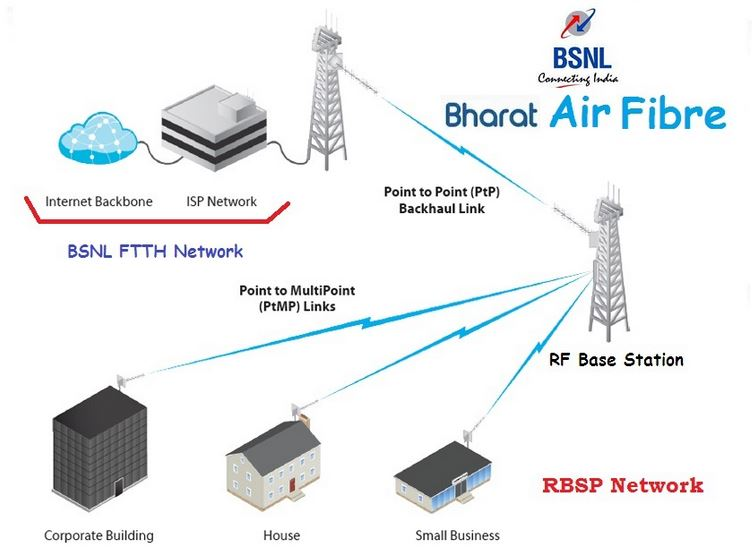Bharat Air Fibre: Wireless Internet | 03 Aug 2020
Why in News
Recently, Bharat Air Fibre Services have been inaugurated at Akola in Maharashtra providing the residents wireless internet connections on demand.
Key Points
- The Bharat Air Fibre services are being introduced by Bharat Sanchar Nigam Limited (BSNL) as a part of the Digital India initiative by the Government of India. It is being scaled pan-India.
- Aim: To provide BSNL fibre-to-the-home (FTTH) wireless connectivity up to a range of 20 km from the BSNL points of presence.
- Features:
- The connectivity speed is 100 Mbps and BSNL is offering various broadband plans in wireline and wireless segments.
- There is a huge demand for high-speed broadband service in the present situation as there is the migration of people from metro cities to rural areas due to the Covid-19 pandemic.
- The service is becoming popular due to Work from Home (WFH), e-learning, online shopping, gaming and entertainment, etc. amidst lockdowns.
- BSNL is also providing unlimited free voice calling.
- The connectivity speed is 100 Mbps and BSNL is offering various broadband plans in wireline and wireless segments.
- Mechanism: It provides high-speed broadband to subscribers of remote areas by bridging the gap of last-mile connectivity through radio waves.
- A vast network of Optical Fibre has been laid by BSNL up to nearest Telephone Exchange or Mobile Tower and from there the connectivity is provided to subscribers over wireless.
- Benefits:
- Customers at remote locations will be benefitted as BSNL comes with the cheapest services with the support of Telecom Infrastructure Partners (TIPs).
- These services are wireless and there are very low chances of interruption in services locally.
- BSNL is tying up with local entrepreneurs/unemployed youth on revenue sharing basis thereby generating employment in rural areas.
- They will earn a regular monthly income of about one lakh per month thereby becoming self-reliant under the Aatmanirbhar Bharat initiative.
- This service could be a game-changer for rural areas as with a little integration of Internet of Things (IoT) and sensors, the moisture content of soil can be known on a real-time basis, so that irrigation can be planned, resulting in saving of water and thereby increasing productivity.
- Sensors can be tied to the neck of dairy cattle, enabling continuous recording of body temperature so as to know the exact time when milk output is best.

